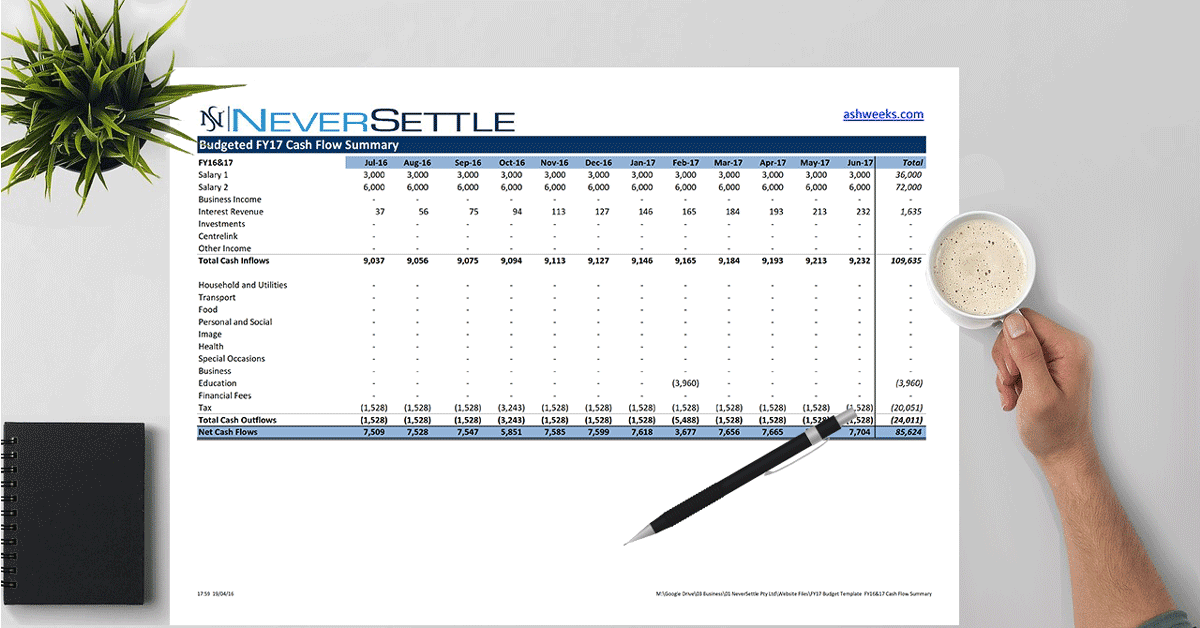Everyone wants to live a particular lifestyle, do certain activities, and have various possessions. Any product or service you would like to use comes at a price, however, and the money has to come from somewhere.
Since most people trade their time for money when they would rather be doing something else, an important question to ask is, “How much is enough?”
This question could be directed at several areas of finance: how much money is required to fund your lifestyle; how much money is required to pay for a particular goal (e.g. a holiday, a car, a wedding, or a climb up Mount Everest); and how much money is required to fund an enjoyable retirement. Today’s focus is on lifestyle.
In earlier posts, we looked at designing your ideal lifestyle and we sorted out different stages of lifestyle progress, such as Minimum Lifestyle and 75% Lifestyle. The next step to achieving your ideal life is figuring out roughly how much money you need to fund it.
Estimating the Cost of Each Stage
Minimum Lifestyle
The most important stage, in my opinion, is the Minimum Lifestyle stage. This was the lifestyle where you wouldn’t be lacking in any essentials:
- you wouldn’t be stressed at work;
- you wouldn’t be in debt;
- you would have time with family and friends;
- you would be in good health and have access to health services;
- your home would be adequate for your needs;
- you can get yourself from A to B, whether that means you have adequate access to public transport or you have a car that gets you from A to B without breaking down or being a safety hazard;
- you go on the occasional holiday; and
- you have enough down-time to relax or pursue hobbies and interests.
Money
The method we are going to use to work out your required income is based on what is in Tim Ferriss’ fantastic book The 4-Hour Workweek, which I highly recommend to anyone looking to improve their productivity, earning potential, and outlook on the affordability of life.
The goal is to work out how much money you need to be making to achieve your desires. Since the making of money is generally referred to as earnings over time (in contrast to a lump sum), we need to convert any cost that’s normally a lump sum into a regular expense. In other words, instead of putting a $40,000 deposit plus purchasing expenses into a house, we will work out what it would cost to rent it. These expenses can be yearly, monthly, weekly, daily — whatever works for you.
Let’s work through an example of a Minimum Lifestyle costing for a hypothetical university graduate in Victoria, Australia about to move out by herself.
- Adequate home: a one or two bedroom apartment or unit in Ringwood — A$1,280 per month
- Basic A to B car: a 2005 Holden with ~100,000km ($5,000) — $100 p.m.1
- Occasional holiday: a trip to Queensland or Bali once a year ($1,500) and a trip to Phillip Island once a year ($500) — $165 p.m.2
- Good health and access to health services: gym membership ($550 p.a.), public health system, a few trips to doctors and specialists a year ($350 p.a.) — $75 p.m.3
- Other expenses. I’ll use my own budget as a starting point:
- Utilities (mobile, electricity, internet, etc) — $270 p.m.
- Transport (fuel, registration, car repairs, etc) — $310 p.m.
- Food (groceries, dining out occasionally) — $330 p.m.
- Special occasions (birthdays, Mother’s/Father’s Day, etc) — $85 p.m.
- Lastly, small extras:
- ‘Whatever’ money (activities with friends, dining with family, cafés, new gadgets, etc) — $170 p.m.
- Image (clothes, shoes, makeup, nails, toiletries, etc) — $100 p.m.
The above Minimum Lifestyle works out to $34,600 a year, $2,885 per month, or $665 a week.
It does not include one-off payments that might come up, and these would have to be factored in. For example, the girl in the above example probably doesn’t have much furniture to take into the apartment/unit when she moves out. Some basic furniture, kitchen appliances, dining, etc could add up to about $5,000. If she wants to move out in the next four months, then that $1,250 a month is added onto her required income. After four months, she will have the $5,000 to pay for her house setup.
Time
The Minimum Lifestyle design above includes points that affect time, not money.
They include having time to spend with family and friends, time to relax and pursue interests, and not spending so much time at work that she is stressed out.
That criteria translates into working no more than 40-50 hours a week to earn the $34,600 a year (after tax).
The girl in our example should step out of university into a graduate role with a salary of about $52,0004, or $43,600 after tax. This means that the first four days of work she does a week goes into funding her lifestyle and the fifth day is ‘extra’. This could be considered savings for future goals, it could be considered as ‘banking’ one day each week to enable her to take time off work in the future, or perhaps it could be considered as an optional day — if her employer enabled her to work four days a week instead of five, she would still have enough money to fund her lifestyle. This extra day could be used for anything, including starting her own part-time business.
Ideal or 75% Lifestyle
The fun part is upgrading the Minimum Lifestyle into something you prefer, which is your ideal lifestyle.
Want a fancy $50,000 Audi? Increase the car expense from the $100 p.m. it currently is to $700 p.m.5 (a 20% increase in total expenses).
Want to move from the old unit in Ringwood to a fancy Gold Coast apartment by the beach with a gym, pool, and Zen Garden? Increase the $1,280 p.m. to $1,950 p.m (a 23% increase in expenses).
Or perhaps you want to reduce the number of days you work, to free up time for more fulfilling pursuits. In the Minimum Lifestyle example above, the graduate only needs to work four days a week. If she wants to work only three days a week, the income she earns in four days now needs to be earned in three. That’s the equivalent of increasing her expenses by 33% 6.
Purpose
Regardless of the lifestyle you set yourself, having a target weekly, monthly, or yearly income lets you know exactly what your effort is going towards.
Knowing how much you need to earn to live the life you want provides a benchmark and a target to aim for. It can motivate you to put in the required number of hours because you know it’s going to get you what you want.
Also, knowing that you only need to work four days a week to provide yourself with decent living standards opens up possibilities that you may have never considered before. You could start a business that might grow to allow you to eventually leave your job. You could volunteer in a way that adds fulfilment to your life. You could spend more time with family. The choice is yours.
Look out for this week’s post on ideas of how to produce the income to fund your lifestyles.





